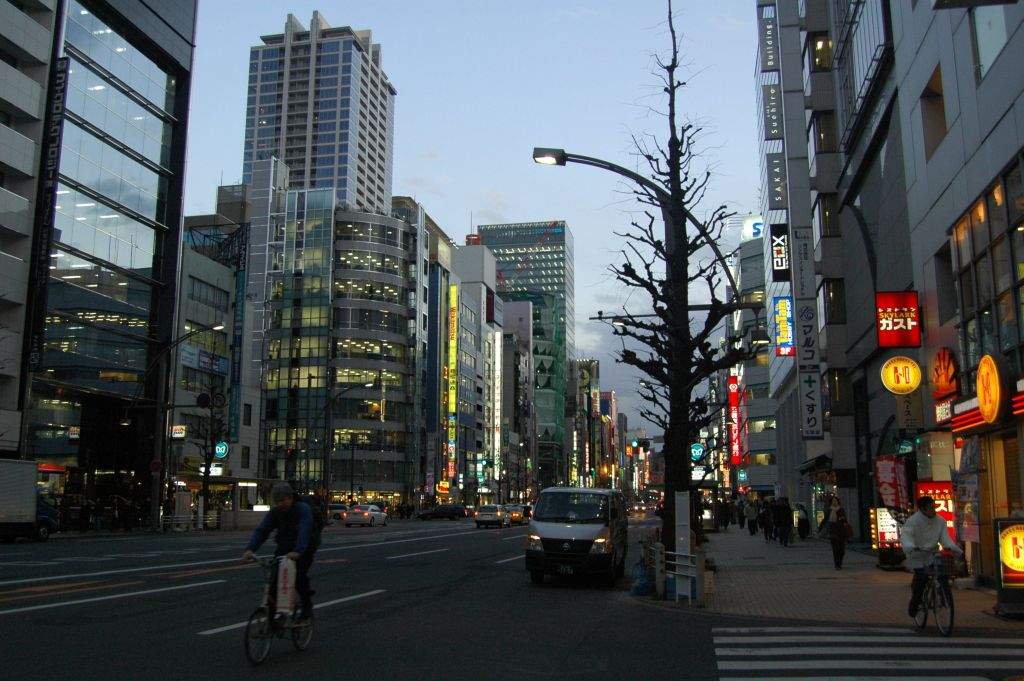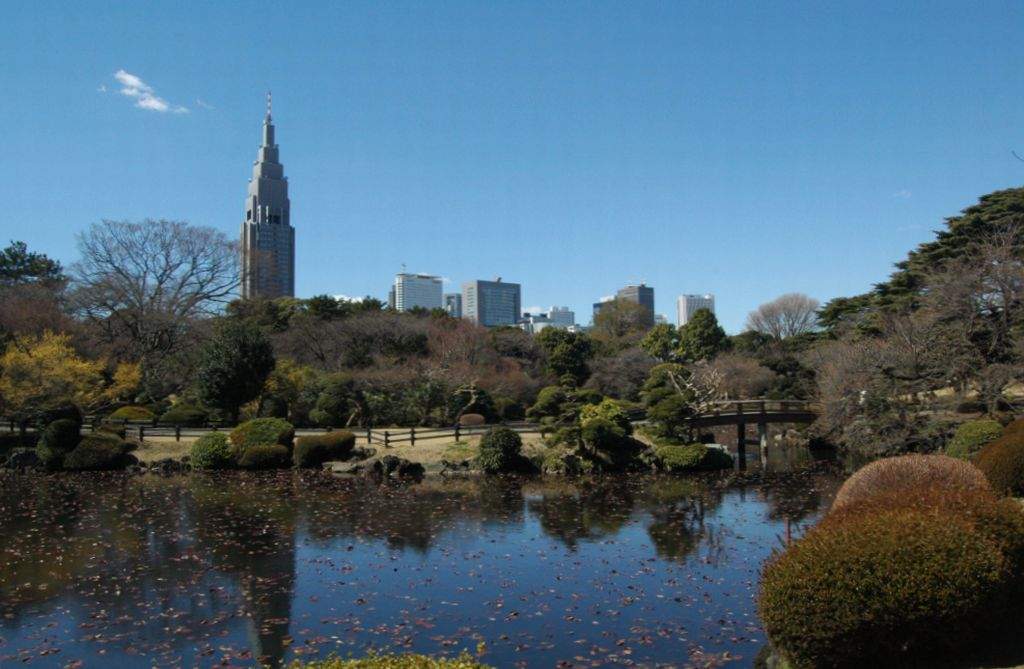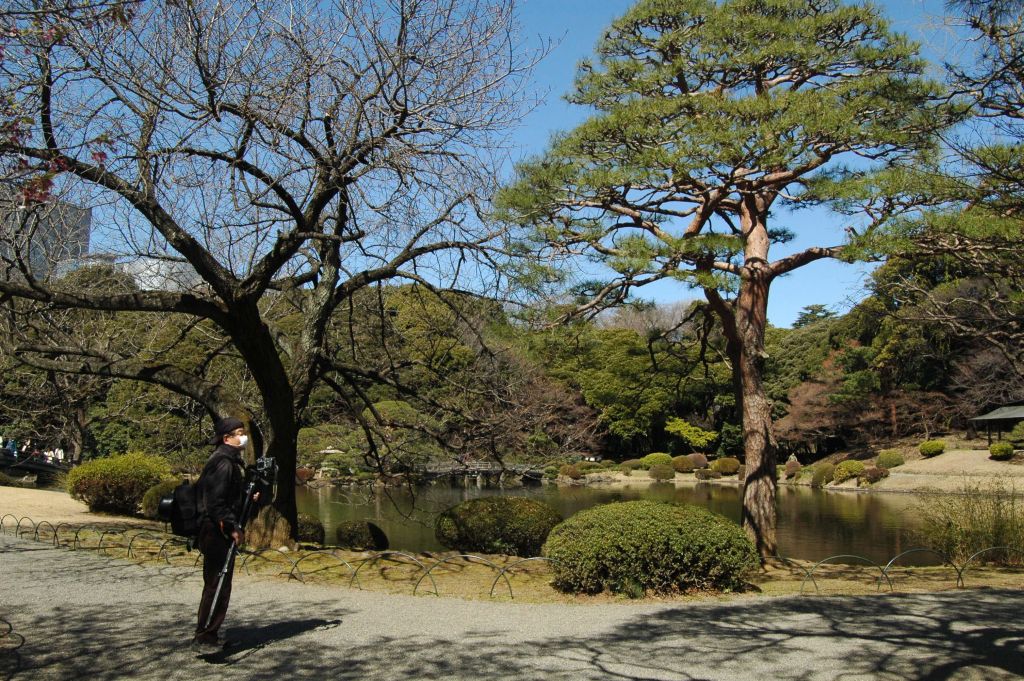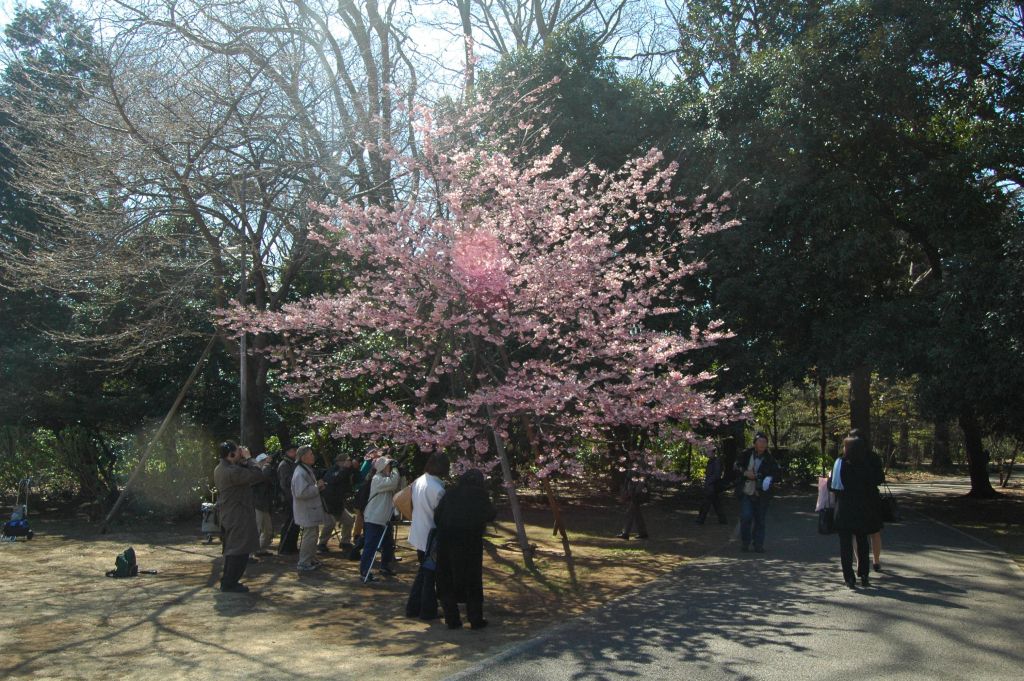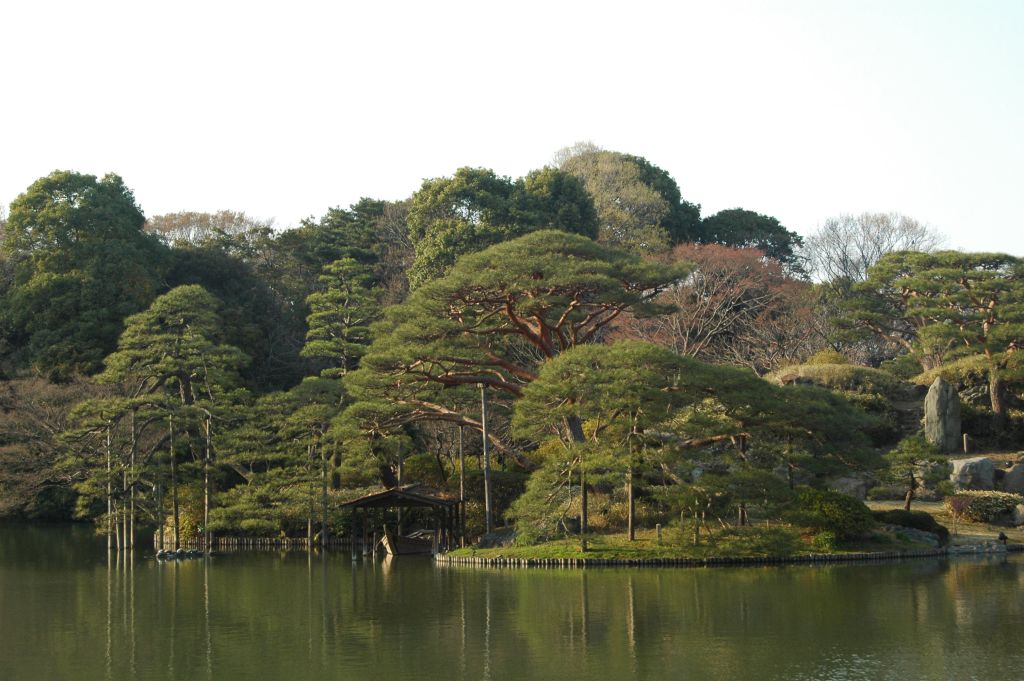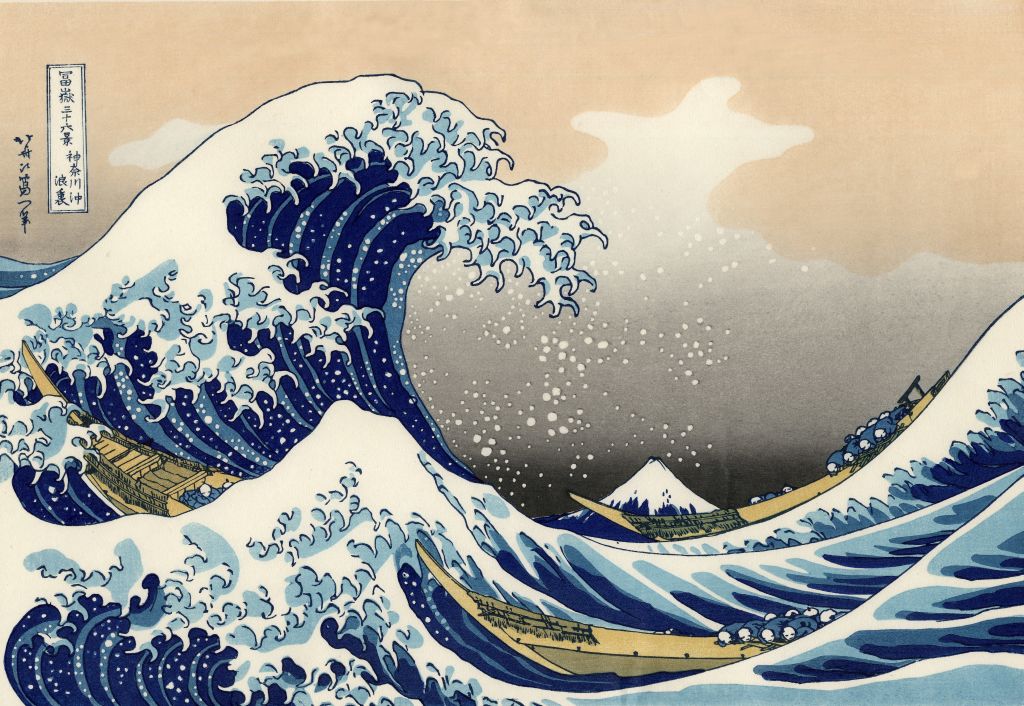Last visitation of Nihon
Welcome to the first page with my grand plans
Suggestions for the next vacation in Japan
'The best laid plans of mice and men' usually fall apart at implementation time, but it is still so much better than not having any kind of plans at all. It is always easier to decide yes or no on a trip suggestion than coming up with something - especially in the mornings, where the decision on what to do that day is usually decided.
The trip suggestions are grouped according to locations. They are places that I would like to visit at some point, so we do not need to visit them all this time (of course depending on whether I will travel to a Japan again). Some of the suggestions are season oriented as well, eg. the parks and gardens, I would like to visit again for the autumn colours this time. Others are one-time occurrences, like some of the museums listed under the Meguro and Ueno trip suggestions.
The idea is to have these options ready for the morning table and then take it from there. Usually someone voices a wish for seeing this or that and with a bit of luck this can be found on one these locations, otherwise we can always wing it. I have nowhere near listed all the stuff that can be found at each location, so it comes up to have some on-site creativity for the rest - it worked out fine last time (I believe) we were in Japan.
These trip suggestions first appeared in my rantings, but for easier overview they have been collected here, as well as rephrased and improved and extended in any way I could think of. I expect to weed out in these trip suggestions after next vacation in Japan, when we hopefully will have visited a few of the spots listed here.
There are listed about 5 suggestions per page, to reduce loading times, and the suggestions can also be directly accessed fromt the menu on the right.Starting here with the first five suggestions.
Trip #1: Kamakura
During my daily browsing of Japanese news sites (those that are in english) I noticed a short article showing a picture of Tokyo taken sometime in the 19th century by a greek photographer, Felice Beato, who lived in Yokohama between 1863-1884. Among his more well known pictures are the ones he took of the Daibutsu (the Great Buddha) of Kamakura, the second greatest Buddha in Japan. The greatest Daibutsu being the one in Nara. Today, the Daibutsu in Kamakura , which was made around 1252, looks pretty much like it did in the 19th century as can be seen in the pictures here.Kamura was the capital city of Japan from 1192, while the Minamoto clan ruled, until 1333. This was the time of the first shogunate. Among other things the Tale of Genji book takes place during this period. Genji being simply another way of reading the Kanji characters for the Minamoto clan. The Tale of Genji link lists the places that are referred to in the book, although I have yet to find any places in Kamakura that are mentioned in the book. It would be quite interesting to visit if there are any. By the way, both Anders and I bought this book the last time we were in Tokyo. Actually on the first day and in the first shop, a book shop, that we visited.
This sightseeing trip could be seen as a part of a theme visiting the capital cities of Japan (Tokyo and Kyoto already done last time) or as a theme of visiting all great buddhas (Kyoto done last time).
Kamakura is served by two railway companies, JR East and Enoden, and to get there from Tokyo we could take JR East which connects Kamakura directly with Yokohama and Tokyo. The Enoden (Enoshima Electric Railway) operates a tram like line from Kamakura Station along the Pacific coast to Enoshima and Fujisawa. Kamakura's top attractions are concentrated in three areas, around Kitakamakura Station (Kamakura's Zen temples Engakuji and Kenchoji), Kamakura Station (Hachimangu Shrine) and Hase Station on the Enoden Line (Great Buddha and Hasedera). Due to its relatively small size, Kamakura can be explored entirely on foot if so desired.
View Larger Map
Kamakura's attractions are listed here in the Japan Guide, Japan Ref (move the mouse to the upper right on this page and watch something cool) and in the Official City Guide (in english). The later has quite elaborate descriptions for quite a number of attractions and include estimated times to walk there. In addition to the historical landmarks there are parks, gardens and the Marine Park at Inamuragasaki. The later is a definite must see where it is possible to view Mt. Fuji and Enoshima island in one sight.
Looks like a full day tour.
Link to Kmz file for Google Earth. Here is a link to Google Maps with placemarks what we should/can visit, this is the embedded map above. There is a lot!
Trip #2: Nokogiriyama
The Daibutsu in Kamakura and Nara are the second and largest statues in Japan. But the actual largest Daibutsu is the one in Nokogiriyama with its 31 meters in height. It is not a statue though but is carved into the rock cliff.I did not find much information about this place in official guides, but it still seems to be a well known tourist attraction, that is visited both by gaijin and locals.
To get there we can take a train to Kurihama (Yokosuka line). Kurihama is a small town famous for being the place where Perry landed in Japan for the first time. Then take a ferry across Tokyo Bay which will take around 40 minuttes. Arriving at Kanaya, the main tourist attraction is located in the mountains just behind the small village. At the end of the day, we can go back via Hota station, and either go back and take the ferry or go with the train all the way back to Tokyo.
Nokogiriyama has a number of Buddhist temples cut/carved into the cliffs. There is a rope-way gondola that can be used to go directly to the top, with a panorama view on a clear day of Chiba, Tokyo, Yokohama and Mt. Fuji. An alternative is to climb or rather walk the 3000 something steps up the mountain. At the top, the most spectacular point is Jigoku-nozoki ("peering into hell"), a very small rock platform which sticks out over a cliff.
Most of the information about this place was found here, and there are a number of pictures as well. I had a number of other links, but unfortunately I have lost them and google is not very helpfull.
This a walk and sightseeing trip, with mainly scenic attractions and some historical places, and we would get to cross Tokyo Bay. I seem to recall that one of the local specialities is some kind of seasoned (quite old) fruit that is sold as a snack.
The trip would probably take a whole day.
Location on Google Earth is here.
Trip #3: Akihabara
The third in the series of possible places to visit is Akihabara.Akihabara is well known among both Japanese and gaijin tourists as the place to go for shopping at the hundreds of shops/stores selling home electric products and digital appliances. It is also known as part of Japanese pop culture with otaku stuff such as manga, anime and cosplay. Additionally there is quite a lot of different gaming going on.
This is not really an option. I visited it at least 6 times, last time, and plan to do it as many the next time. I have a need to wallow in electronics and other stuff, that being cameras, computers, games, accessories and what else can be found there.
Not that the merchandise is truly cheap in any way, but there are lots and lots of shops and lots and lots of stuff. Drooling.
Helle found that there is a tour on saturday noon, which could be interesting. Though I did not like the note at the bottom, about the risk of being interviewed by Japanese television or newpapers. Don't wanna be seen as a gadget geek...
Besides the electronics, anime, manga and other otaku stuff, there are other interesting 'things'. But I was in Akihabara shortly after sunday noon last time in march, and I did not see anything interesting, so I wonder... But of course it was raining that day so it may have been cancelled.
Trip #4: Parks and gardens
The following parks and gardens must be visited (well at least 3 of them) for the purpose of taking digital images of the autumn colours sweeping the trees and bushes.From last time it is known that each park or garden will typical take 1-3 hours depending on its size, and depending on whether there are other sights or opportunities on the site being visited.
Shinjuku Gyoen National Garden
Gyoen was visited last time, actually on the morning after arriving. So we (except me, of course, who was still high on being in Nippon – and remained so for most of the rest of the vacation) were all somewhat tired, and so at least for me, the memory of walking in the park remains a bit fuzzy. I can mostly remember focusing a lot on taking pictures, a lot of them, many identical and many with slight focusing problems and with a skewed angle. Somehow I managed not to take pictures upright that day, but with an angle of a few degrees, like I was leaning to one side all the time. The picture of the clock tower has been slighty corrected for that. The tower, by the way is visible from Harajuku and farther, and is a very prominent landmark (if one gets high enough) for Shinjuku.
The garden is a mixture of French formal, English landscape and Japanese traditional gardening without loosing the characteristics of the individual styles. There are greenhouses with subtropical and tropical plants as well.
There are 1500 cherry trees which bloom from late March to late April depending on the sort. Last time it was easy to spot a cherry tree as there were always a group of locals standing beneath it taking pictures. And when in Japan ... Although it ended up being lots of pictures of cherry trees with japanese taking pictures of the cherry blossoms.
The garden is close to Shinjuku, a large shopping area which we really did no get to see much of last time, so a shop and relax option. It is located here (kmz file for Google Earth).
There is one more park in Shinjuku.
Shinjuku Central Park
This park is a small green area surrounded by the tall buildings in Shinjuku, including one of the tallest in Tokyo, the Tokyo Metropolitan Government Buildings 1 and 2. During the night the park belongs to the homeless who pack up during the day, and during the day it is a popular lunch spot for the salary men and OL, and probably office workers in general.
It is possible to get to an observatory (around 202 meters up) in one Tokyo Metropolitan Government Buildings and there are some cultural elements that be seen there as well. Here is link.
So a combination visit of the two parks and Shinjuku in general seem a possibility.
Rikugien Garden
Close to Komagome station, this is a very beautiful, Japanese style landscape garden. Built around 1700, Rikugien literally means "six poems garden" and reproduces in miniature 88 scenes from famous poems (which I did not get or find last time). Rikugien is a spacious garden with a big central pond, small islands, forested areas, hills and a few teahouses.
Last time we visited it during the late afternoon (see also the 69 days to go post). The long shadows cast from the low afternoon sun were very soothing and brought on a slight meditative state (best expression I can come up with to explain this) – or maybe my blood sugar was simply getting too low that day.
Got my spring pictures, need autumn pictures.
It is located here.
Hama-rikyu Gardens
I have no idea how we missed this garden last time. It is close to where we took the river boats to / from Asakusa and Odaiba, and close to Shimbashi station as well.
According to Japan Guide, Hama-rikyu gardens is one of Tokyo's most attractive landscape gardens. It is close to the futuristic Shiodome district, so the tall buildings provide a high-rise background, when walking in the gardens. There are seawater ponds (it is very close to the coast), which change water level with the tides, former duck hunting grounds, forested areas and a teahouse.
It is located here.
Kasai Rinkai Park
This park is on the ”other” side of Odaiba (location link). It seems to be more a of a traditional modern park, including an aquarium and a bird sanctuary. It is fairly new as it opened in 1989 and is probably more of interest if one wants to see how new parks are styled.
It has a big ferris wheel.
More gardens and parks
There are several more gardens and parks. There is one in Ueno. There are the Imperial Palace gardens. There is the famous blue river of flowers that is close by the Meiji Shrine in Harajuku.
Japan Guide has a list of even more gardens and parks here. Some of which may be worthwhile to at least pay a short visit. I would definitely like to see one or more stone gardens.
There will be a separate trip post about koyo spots that must be / can be visited.
Trip #5: Mt. Fuji
Mount Fuji is the most famous mountain (although it is a volcano) of Japan and probably one of best-known volcanos of the world beside Vesuvius. The volcano rises about 3776m above the surrounding plain. Fuji has erupted at least 16 times since 781 AD. Most of these eruptions were moderate to moderate-large in size. The most recent eruption was in 1707-1708 from a vent on the southeast side of the cone. Hm, 300 years since the last eruption.Fuji has often been depicted in Japanese art and one of most famous ones is The Great Wave off Kanagawa.
This was the first in a series of woodblock printings 36 Views of Mount Fuji by Hokusai. The printing was first published in 1832 and is the artist's most famous work.
Helle found a guided tour to Mt. Fuji with Sunrise Tours which we are going to take:
It is a one day tour with a deluxe motorcoach (whatever that is exactly) to first a Fuji Visitor Center Nature (Displays culture and artwork concerning Mt. Fuji), then by coach on to Mt. Fuji 5th Station at 2305m. Followed after lunch by a cruise on Lake Ashi aboard a sightseeing boat, and an aerial cableway ride up and down Mt. Komagatake (1357m) for a view of the Hakone National Park.
Mt. Fuji is located here.
There is another Mt. Komagatake in Hokkaido, but that is an active volcano that erupted just 7 years ago.
